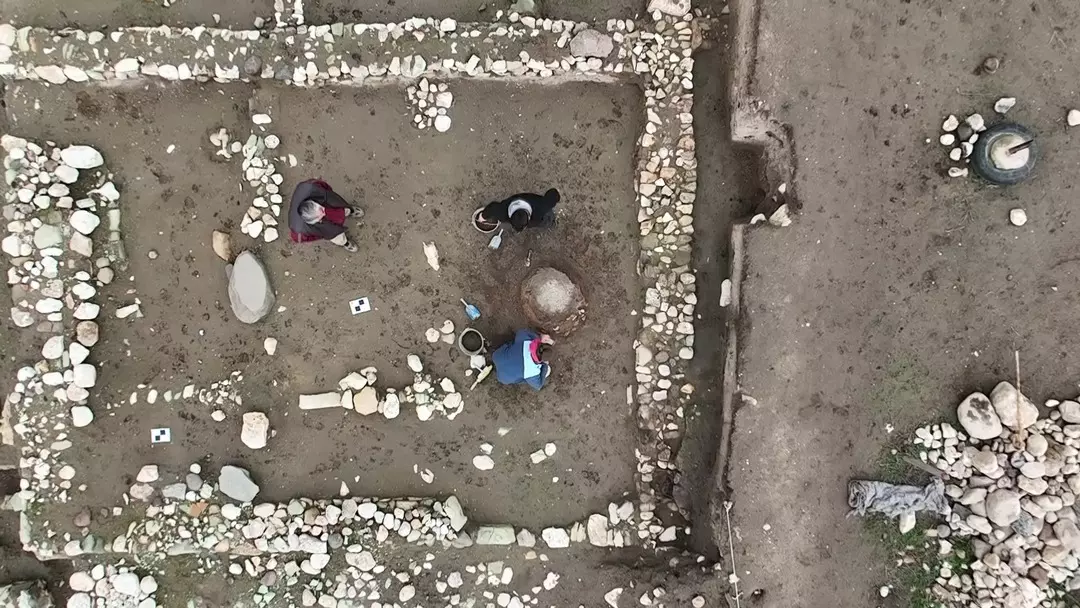Underwater discoveries, from sunken civilizations to the millions of shipwrecks still undiscovered on the seabed, capture the interest of history buffs like nothing else. With less than 1% of the ocean floor having been explored so far, the world's oceans and seas have been dubbed the largest museum in the world. Some contend that the Bronze Age port of Pavlopetri's ruins, which were only recently found, may have served as the inspiration for the mythical tale of Atlantis.
Finding of Pavlopetri: The World's Oldest Underwater Town
The remnants of a submerged settlement thought to have existed as long ago as 5,000 years ago were unearthed in the 1960s by Nic Flemming from the Institute of Oceanography at the University of Southampton. The archaeological site, which is 4 meters (13.12 feet) below and is situated close to the little village of Pavlopetri in the Peloponnesus region of southern Greece, is currently thought to be the oldest known planned underwater town in the entire world. Thus, it joined the company of other enigmatic underwater colonies, towns, and cities that have captivated the interest of history buffs, such as:
Shi Cheng, an ancient Chinese city, is immaculately preserved (the Lion City)
India's fabled sunken temples at Mahabalipuram
Heracleion, an ancient Egyptian city
Israel's Atlit Yam Neolithic site, which dates back 9,000 years
Jamaica's Port Royal, a city of pirates during the 17th century
The site was first recognized by geologist Folkion Negris in 1904, but after Flemming rediscovered it, a group of archaeologists from the University of Cambridge investigated it in 1968. The University of Nottingham then started a five-year project to research the town of Pavlopetri in 2009, overseen by John C. Henderson, in collaboration with the Hellenic Centre for Marine Research and the Ephorate of Underwater Antiquities of the Greek Ministry of Culture and Tourism.
In order to examine the seabed and bring the historic town back to life before the fragile remnants are lost forever as a result of lack of protection, pollution, waves, currents, and tourists, the Pavlopetri Underwater Archaeological Project was created. Pavlopetri was the first underwater village to be digitally scanned in 3D using sonar mapping technology as a result of the project. They were able to create amazing photorealistic 3D digital reconstruction photos thanks to the confluence of cutting-edge marine science with movie industry computer graphics, which transformed underwater archaeology.
What did they discover at Pavlopetri?
The study project discovered thousands of items at the location that shed light on daily life at Pavlopetri between 3000 and 1100 BC, when it "sank," perhaps as a result of localized earthquakes, erosion, rising sea levels, or even a tsunami. The first evidence of a sunken metropolis in Greece that precedes Plato's account of Atlantis can be found there.
Pavlopetri, a representation of life 5,000 years ago, was exceptionally well planned, with streets, two-story homes with gardens, temples, cemeteries, and a sophisticated water management system with channels and water pipelines. The majority of the structures in the city's center had up to 12 rooms inside, and there was even a square or plaza that was roughly 40 by 20 meters (131 by 65 feet) in size. Its uniqueness was emphasized by Dr. Jon Henderson of the University of Nottingham team, who oversaw the Pavlopetri Underwater Archaeological Project. "There are older sunken sites around the globe, but none can be considered to be planned communities such as this," he said in The Guardian.
The renowned ancient Greek epic poem Iliad was set in a time when the city was so old that it had already existed at that time. According to research conducted in 2009, the site is around 9 acres (36,421 m2) in size, and there is evidence that it was occupied as early as 2800 BC. At least 15 buildings have been discovered, and the city's layout is still plainly discernible despite having sunk so long ago. The layout of the city is so obvious that the leader of the Nottingham archaeological team was able to construct what they consider to be an incredibly realistic 3D replica of the city.
According to historians, the ancient city served as a hub for trade between the Mycenaean and Minoan civilizations. Large clay storage containers, statues, common objects, and other relics can be found all around the site.
The city's original name, as well as its precise function in the ancient world, are unclear. According to Elias Spondylis of the Greek Ministry of Culture in the New Scientist, "It's a rare find, and it is significant because, being a submerged site, it was never reoccupied and hence symbolizes a frozen moment of the past."
Today’s condition of the site
The Pavlopetri site has focused its coverage of the world's most frequently explored seafloor on safeguarding the artifacts. The University of Nottingham team employed technology to construct a photorealistic representation of the seabed in a magnificent BBC program from 2011 titled Pavlopetri: The City Under the Waters. To support local conservation and protection efforts, including a Watch Day hosted by the Greek Chapter of ARCH International to raise awareness of the site, Pavlopetri was added to the World Monuments Watch in 2016 as a way to conserve heritage sites that are in danger.
Since then, the Watch Day has included the Pavlopetri Eco-Marine Film Festival, which presents motion pictures and documentaries about the marine environment and offers snorkeling trips beneath the surface of the old city. As a result of these activities, the region was buoyed in August 2016 to protect it from small vessels, and in 2018, it became the first location in Greek waters to be listed on marine charts that the Greek Navy's Hydrographic Department provides to mariners.










